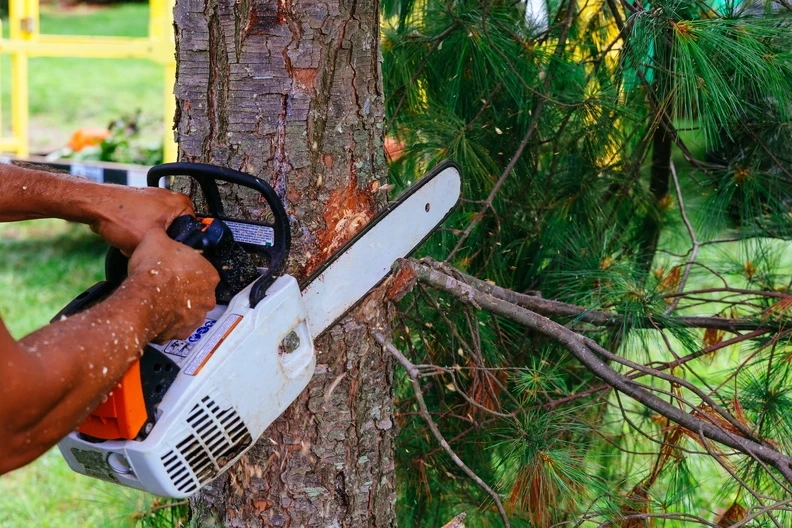Stump grinding, a prevalent method for removing tree stumps from landscapes, presents a range of environmental, safety, and regulatory considerations. While often chosen for its effectiveness and efficiency, the implications of stump grinding on soil health, surrounding vegetation, and pest management are significant. Understanding these impacts, along with the necessary safety precautions and local regulations, can help ensure that stump removal enhances both the aesthetic and ecological quality of the environment.
Environmental Impacts of Stump Grinding
Stump grinding involves using a machine to shred the tree stump into small wood chips, which can have mixed effects on the environment. One of the primary concerns is soil health. The process of grinding can mix wood chips with the soil, which temporarily affects its nitrogen balance. As wood chips decompose, they consume nitrogen, potentially leading to a deficiency for surrounding plants. To mitigate this, additional fertilization may be necessary to support the health of adjacent vegetation.
Moreover, the removal of a stump also affects the local ecosystem. Roots that were once part of the tree's support and nutrient system begin to decay, altering the underground habitat. This can have both positive and negative effects on surrounding vegetation. On one hand, the decay process can increase soil aeration and provide more space for the root growth of other plants. On the other hand, the sudden change in soil structure and nutrient distribution may stress nearby plants.
Another environmental consideration is the potential for pest infestation. Stumps can be breeding grounds for pests such as termites, ants, and fungal diseases, which can spread to healthy vegetation. By grinding a stump, these habitats are eliminated, reducing the risk of pest infestation significantly.
Safety Precautions in Stump Grinding
Safety is paramount when performing stump grinding, given the machinery's potential hazards. Personal Protective Equipment (PPE) is essential, including sturdy gloves, goggles, ear protection, and hard hats. These items protect against flying debris, loud noises, and other common dangers associated with stump grinding.
Securing the area is also crucial to ensure the safety of both the operator and bystanders. The work zone should be clearly marked and isolated to prevent accidental entry. Additionally, before starting the grinding process, it's vital to check for underground utilities like gas lines or cables to avoid serious accidents.
Emergency procedures should be established and understood by all involved parties. This includes knowing how to quickly shut down the equipment and how to contact emergency services in case of an accident. Regular maintenance and operational training on the stump grinder can further reduce risk.
Local Regulations and Best Practices
The regulations surrounding tree removal and stump grinding can vary significantly by location. Many areas require permits for tree removal, particularly for trees of a certain size or historical value. These regulations often aim to protect local flora and ensure safe removal practices.
Best practices in stump grinding not only comply with local laws but also promote sustainability. For example, the chips produced from stump grinding can be repurposed as mulch or compost, adding value back to the environment. Additionally, choosing the right time of year for stump grinding can minimize the impact on surrounding plant life, particularly if they are in a growth phase.
Benefits of Removing Stumps via Grinding
Removing tree stumps through grinding offers several benefits. Aesthetically, it cleans up the landscape, removing unsightly remnants of dead trees and providing a uniform space for new plantings or other landscaping elements. This process also eliminates tripping hazards, which is particularly important in public spaces and residential areas where safety is a concern.
From an ecological standpoint, stump grinding reduces the habitat for pests that could otherwise damage healthy trees and plants. By removing these potential breeding grounds, stump grinding helps maintain the health and vitality of the garden or forest.
In summary, while stump grinding is an effective method for removing tree stumps, it requires careful consideration of environmental impacts, safety precautions, and local regulations. By addressing these factors, stump grinding can be conducted safely and responsibly, benefiting both the environment and the aesthetics of the landscape. This balanced approach ensures that stump grinding is not only effective but also sustainable and safe, aligning with broader ecological and community goals.


